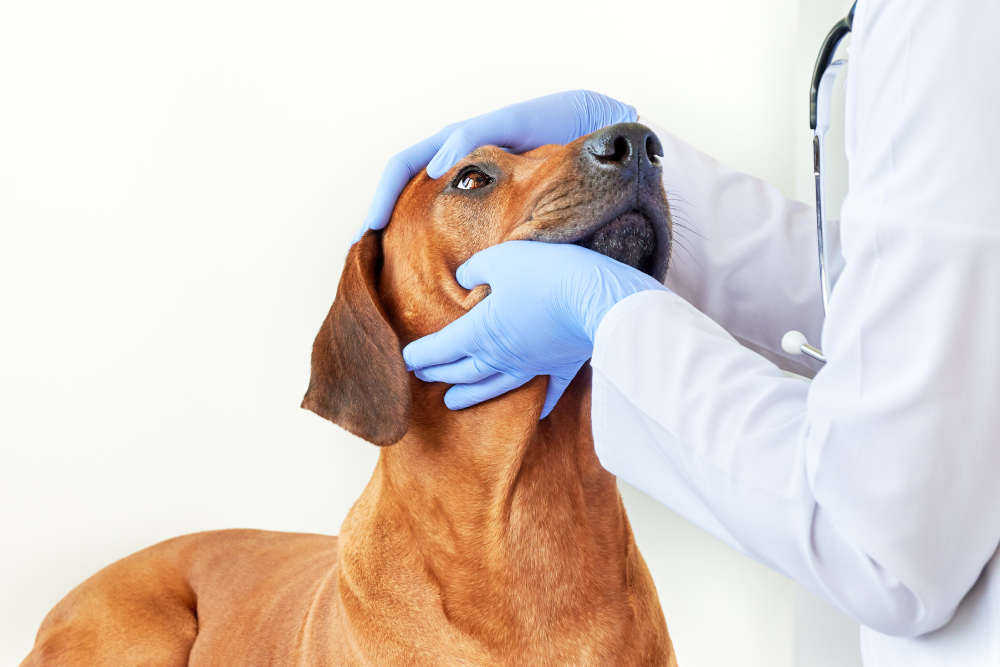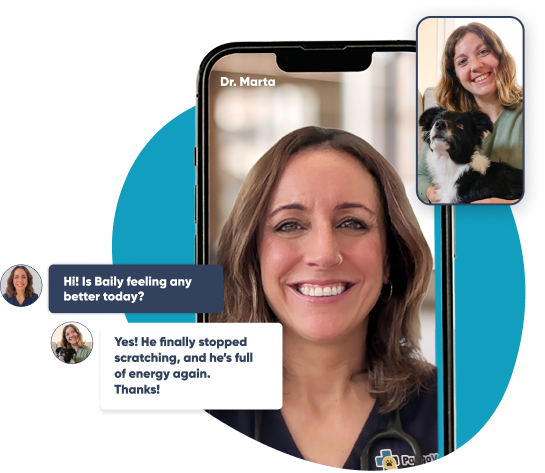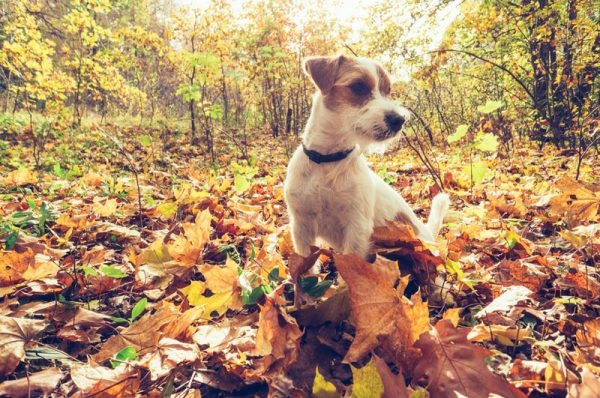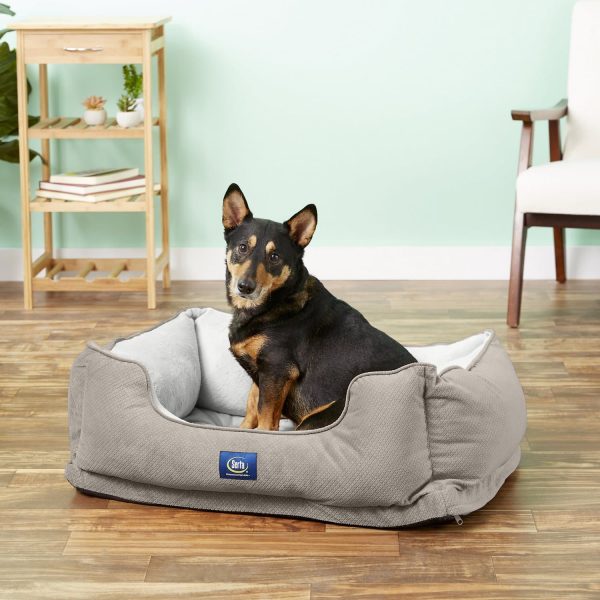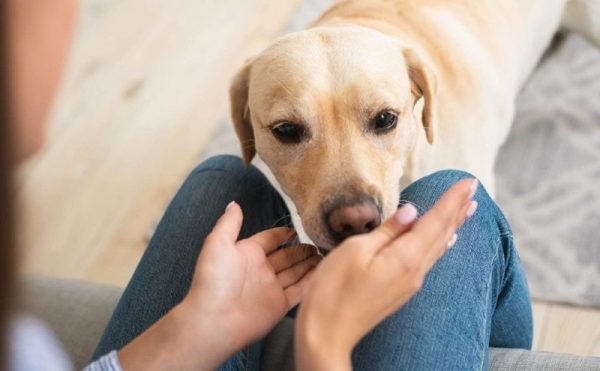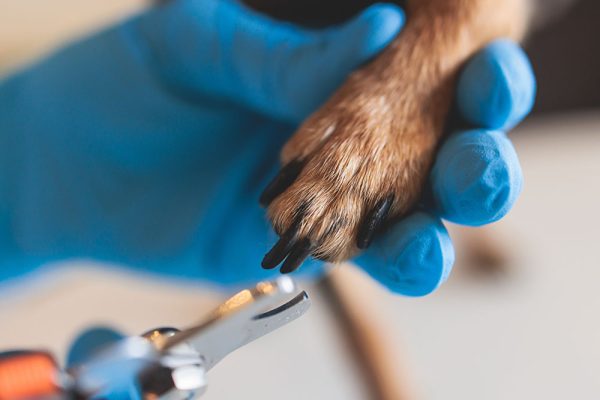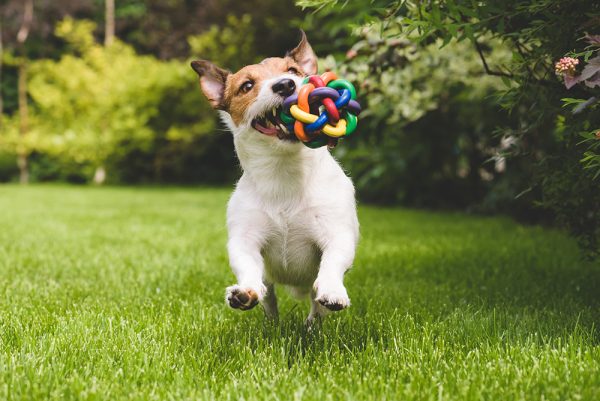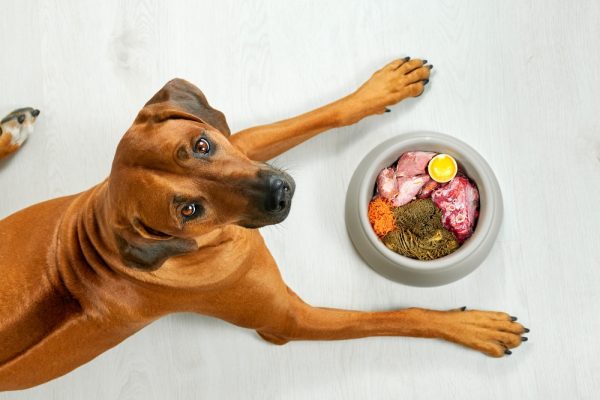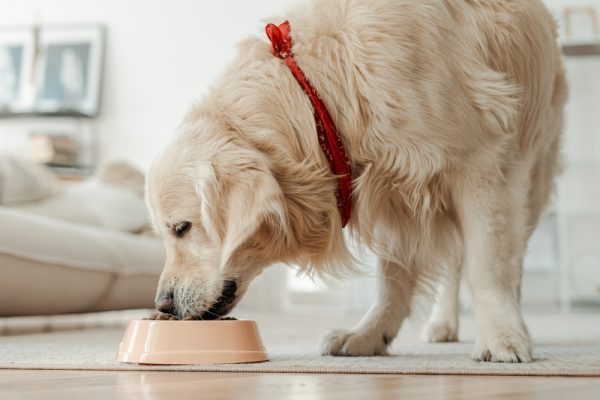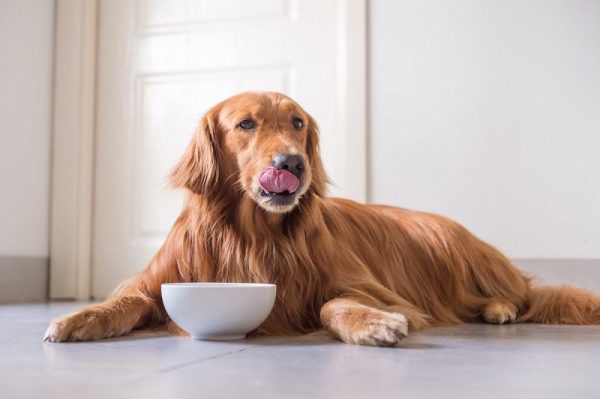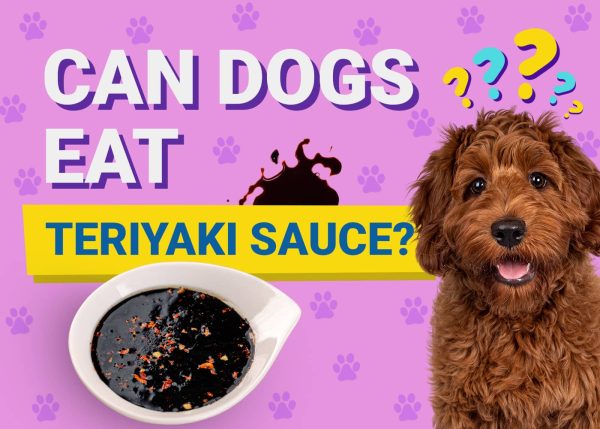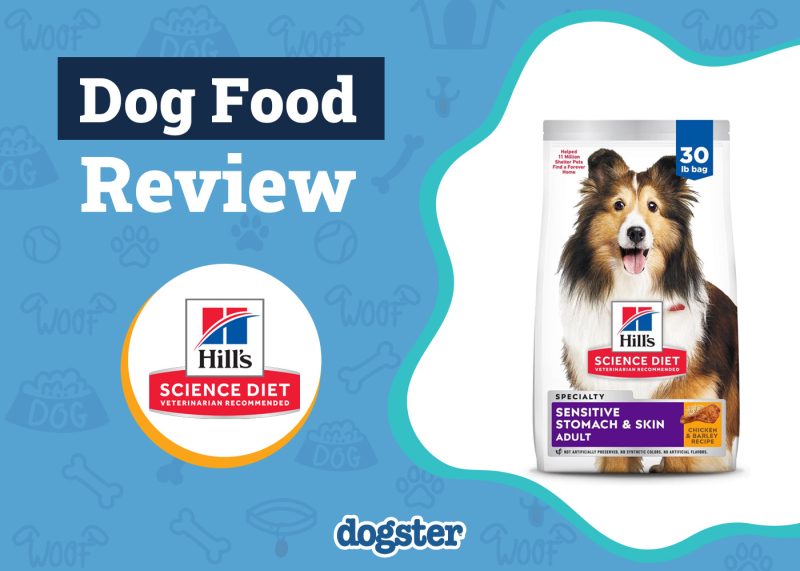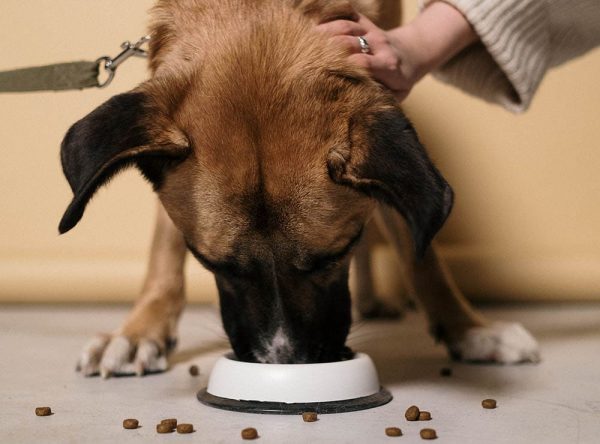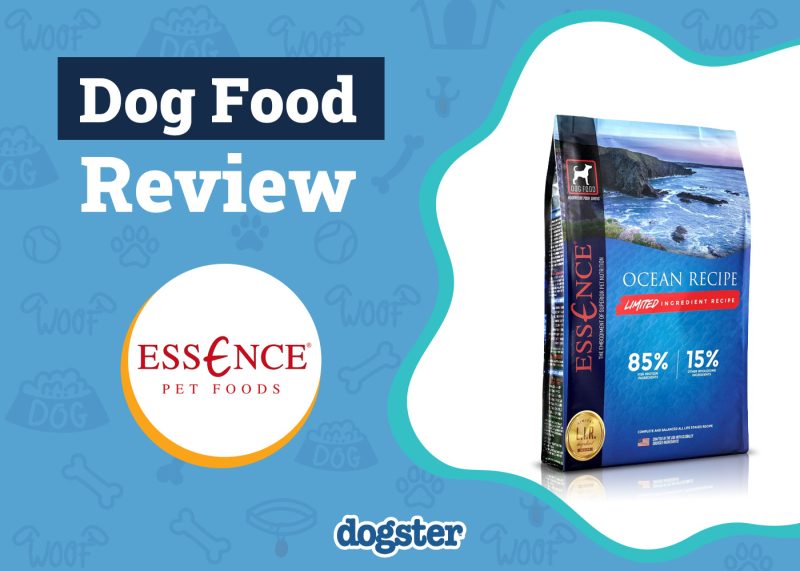Dogs are inquisitive and playful creatures, famous for their strong sense of smell. However, vision also plays a key role in the way dogs interact with their family and surroundings, and healthy eyes are the key to good vision. Entropion is an eye condition that can impair vision and cause discomfort, especially if not treated promptly.
Dogs suffering from entropion have eyelids that roll inwards, irritating the surface of the eye. So, what causes this problem, and what can be done to fix it?

What is Entropion in Dogs?
Entropion is an eye condition in which the eyelid rolls inwards. This causes eyelid tissue and eyelashes to rub against the cornea (the clear front surface of the eye). The cornea is thin and sensitive. It can be irritated, or even ulcerated, as these hairs rub against it.
In some dogs, only one eyelid of one eye is affected; in other dogs, both eyelids of both eyes are affected.
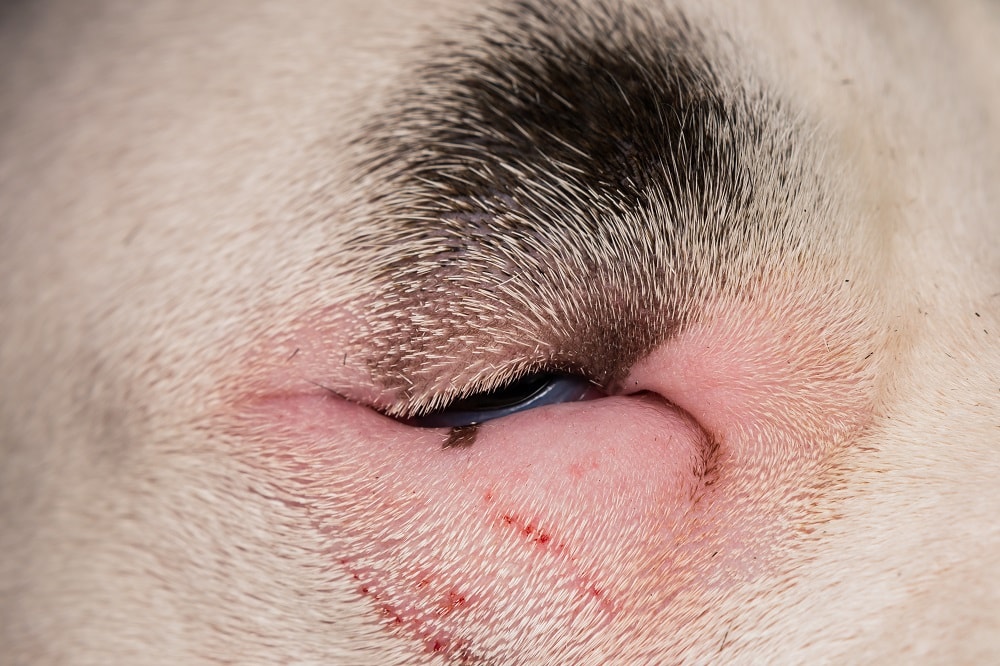
What Are the Signs of Entropion in Dogs?
Entropion varies in its severity. Some dogs display mild signs, making it hard for an owner to detect. Other dogs exhibit very obvious signs.
- Excessive tears
- “Bloodshot” eye/s
- Frequent blinking
- White/mucoid eye discharge
- Squinting
- Rubbing at the face with paws
- Discomfort when eyes are touched
Seek veterinary advice if you’re concerned about your pet’s well-being.
If you need to speak with a vet but can't get to one, head over to PangoVet. It's our online service where you can talk to a vet online and get the advice you need for your pet — all at an affordable price!
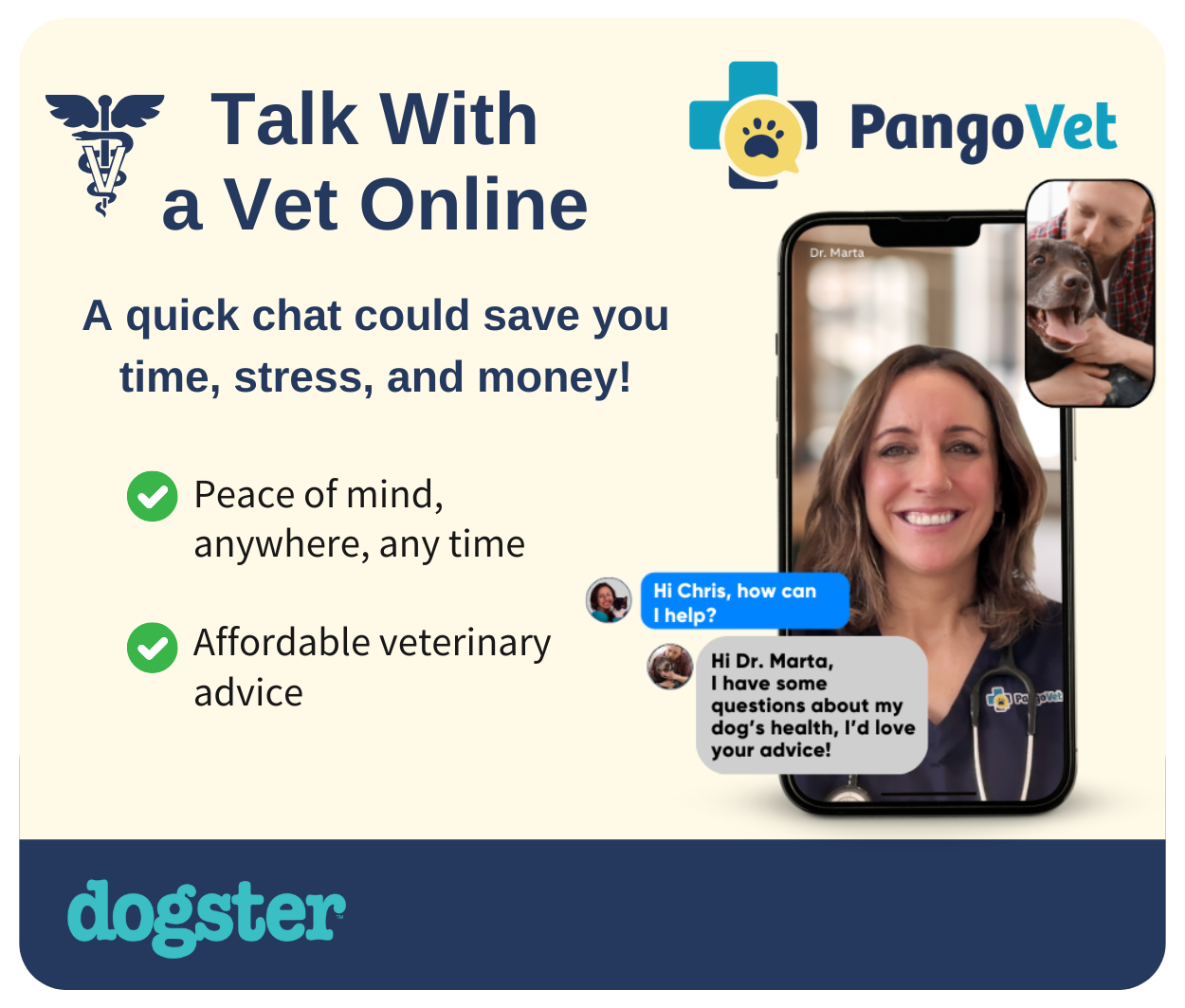

Which Breeds Are Affected by Entropion?
Generally speaking, there are three “classes” of dogs that are affected by entropion.
- Short-faced breeds (Boxers, Bulldogs, Pugs). In short-faced or brachycephalic breeds of dogs, there is more tension on the inner ligaments around the eyes. This can pull the eyelids inwards, causing entropion.
- Large and giant breeds (Saint Bernards, Great Danes, Bullmastiffs). In these dogs, the ligaments around the outer eye are too loose; this also allows the eyelids to roll inwards.
- Excessive facial skin (Shar Pei, Cavalier King Charles Spaniel). Some dogs have been bred over time to select for increased and excessive skin folds. As a result, entropion is common in these breeds.

What Are the Causes of Entropion in Dogs?
Most cases of entropion are breed-related (see above), and vets refer to this as primary entropion. Dogs experiencing entropion as a result of their breed or genetic factors will have this problem for life.
Other dogs suffer from secondary entropion, sometimes referred to as spastic entropion. In these cases, damage to the eyelid, abnormal eyelashes, infection, or excessive weight loss will cause the eyelids to roll inwards. Many cases of secondary entropion are temporary and resolve once the trigger is removed.
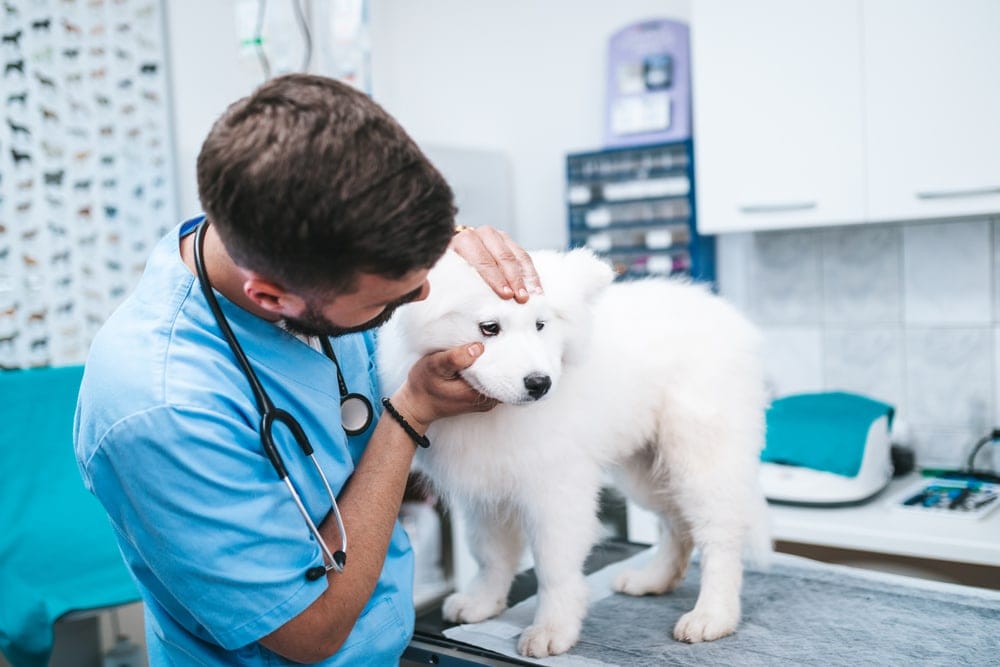
Treatment Options for Entropion in Dogs
Vets do not take a “one size fits all” approach to treating entropion. The right option for your dog depends on a number of factors, including the severity of entropion, the cause of entropion, other health issues, and age.
- Medical management. Many cases of secondary entropion, or very mild primary entropion, will respond to anti-inflammatories and eye ointments. Eye lubricants are sometimes used to protect the cornea. If the cornea has become ulcerated due to entropion, more aggressive medical treatment may be necessary.
- Surgical correction. Most cases of entropion, especially primary (breed) entropion, will require surgical correction. The technical name for surgery is blepharoplasty; this involves removing excessive tissue and reconstructing the eyelids, preventing them from rolling inwards. Dogs must be at least 6 months of age to have this surgery performed so that their facial anatomy has reached maturity.

Frequently Asked Questions
How Is Entropion Diagnosed?
Vets are able to diagnose entropion by a thorough physical examination and ophthalmic examination. A fluorescein (dye) test is often used to check for corneal ulceration.
What If Entropion Affects a Puppy?
Some dogs can suffer genetic or primary entropion very early in life. As we mentioned, dogs should not have a blepharoplasty performed until they are at least 6 months old. To navigate this problem, vets will usually perform a temporary “tacking” procedure to lift the eyelids until the dog is a suitable candidate for the permanent blepharoplasty surgery.
What Is the Prognosis for Dogs with Entropion?
While entropion is not life-threatening, it can be a serious problem if left untreated. Corneal ulceration can lead to eye infections or ruptures that may warrant removal of the entire eye. Thankfully, with prompt and appropriate veterinary treatment, the prognosis for dogs suffering entropion is very good.

Conclusion
Entropion, or rolling of the eyelids inwards, can be either primary (breed-related) or secondary (triggered by an acquired problem). Entropion causes significant discomfort and distress; if left untreated, it may have lifelong consequences. If you have noticed any abnormality in your dog’s eyes, or want to have them assessed for entropion, do not hesitate to seek veterinary attention.
Early intervention will always lead to the best outcome.
Featured Image Credit: Zontica, Shutterstock
